Emergency treatment
Emergency treatment
Emergency treatment in midfacial fractures may be indicated in the following cases:
- Partial or complete visual loss due to direct or indirect optic nerve trauma
- Severely increased intraocular pressure
- Acute space-occupying lesion (eg, retrobulbar hematoma, emphysema)
- Severe shift of orbital content
- Entrapment of eye muscle (particularly in pediatric patients)
- Severe nasal and/or oral bleeding
Globe rupture and intraocular trauma
There are a variety of possible injuries affecting the globe that may require immediate ophthalmological treatment.
Retrobulbar hematoma
Pressure increase in the periorbital region due to retrobulbar hematoma can cause significant injury of the neurovascular structures with eventual loss of vision.
Note: Intraorbital bleeding in patients taking anticoagulation drugs requires special attention.
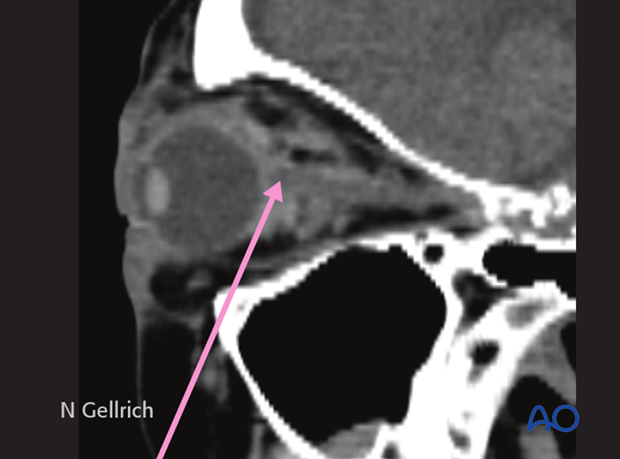
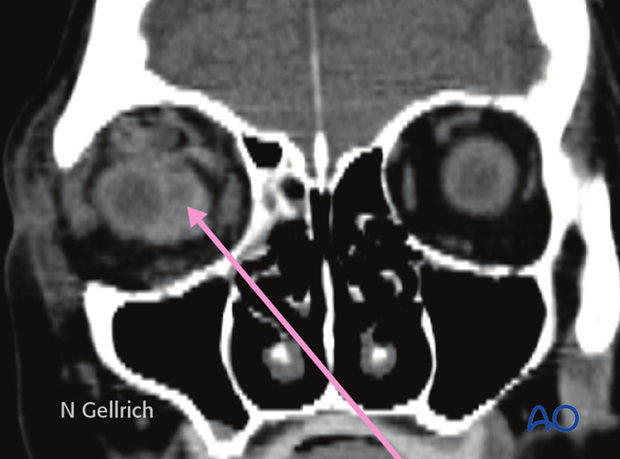
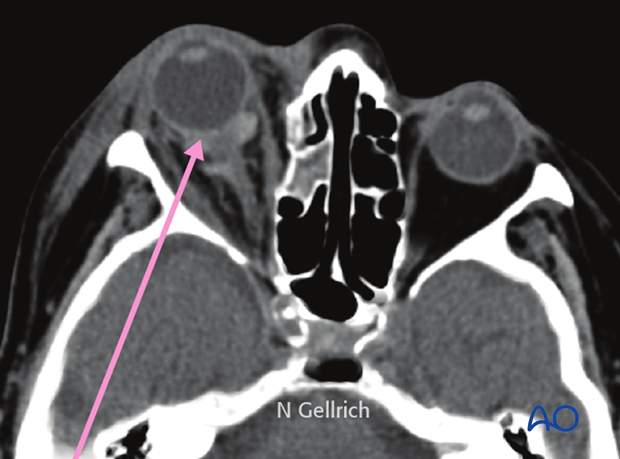
If a retrobulbar hematoma leads to a tense, proptotic globe, emergency decompression should be considered.
If a retrobulbar hematoma in the cooperative patient results in blindness, the time window to release the intraorbital pressure is limited to around one hour measured from the onset of blindness. This could mean urgent treatment under local anesthesia even in the emergency room prior to further imaging.
Transcutaneous transseptal incisions may help evacuate the hematoma and release the periorbital pressure. Alternative methods such as transconjunctival pressure release and/or lateral canthotomy and inferior cantholysis should be considered according to patient condition.
An exception may be where there is a pulsating exophthalmos which may be a sign of carotid-cavernous sinus fistula. A fistula of this nature requires appropriate preoperative imaging.
Note: retrobulbar hematoma is one of the most severe postoperative complications in patients who have undergone orbital trauma and/or surgery. This is one reason why the surgeon has to assess appropriate vision as soon as possible after injury and/or surgery.
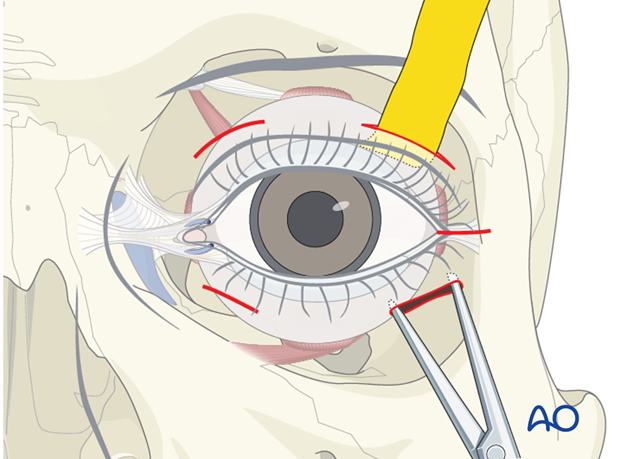
Emphysema
Severe emphysema might significantly raise intraorbital pressure. If this compromises visual function or endangers the orbital contents, orbital decompression has to be considered. Drug protocol may include antibiotics and decongestive nasal drops.
Patients with sinus fractures in the periorbital region should not blow their nose in order to avoid additional emphysema due to acute pressure rise. Should sneezing occur, maintaining an open mouth posture minimizes increasing intranasal/intrasinus pressure.
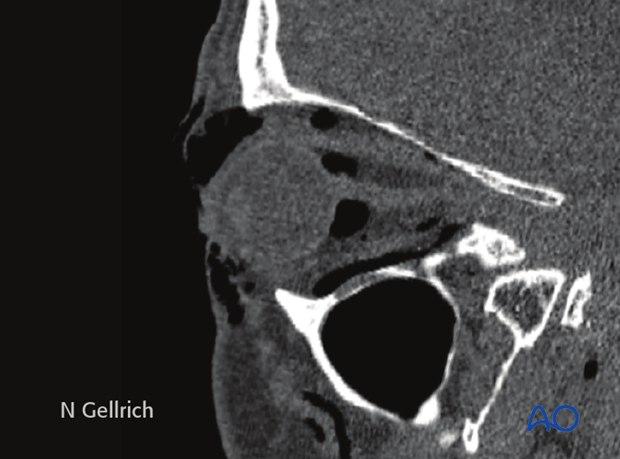
Usually there is no need for emergency treatment in orbital floor/medial wall fractures unless there is severe ongoing hemorrhage in the orbital cavity, the paranasal, or nasal cavity.
In some younger patients, the so-called trap-door phenomenon can occur in which there is danger of necrosis of the entrapped rectus muscle within a few hours; immediate release of entrapped tissues is necessary.
Entrapment of eye muscle (especially in children)
The inferior rectus muscle is the most common ocular muscle to become entrapped with an orbital floor fracture (trap-door phenomenon) and this may not be visible on conventional x-rays. Entrapment requires urgent freeing of the muscle to prevent necrosis of the incarcerated muscle. Clinical examination should give evidence on impaired ocular muscle function. Entrapment is often associated with severe ocular pain on attempted range of motion, as well as nausea and vomiting, especially in children.
Note: In children, entrapment of the eye muscles is more common than in adults; this might be due to the higher elasticity of the bony structures (green-stick fractures are more common).
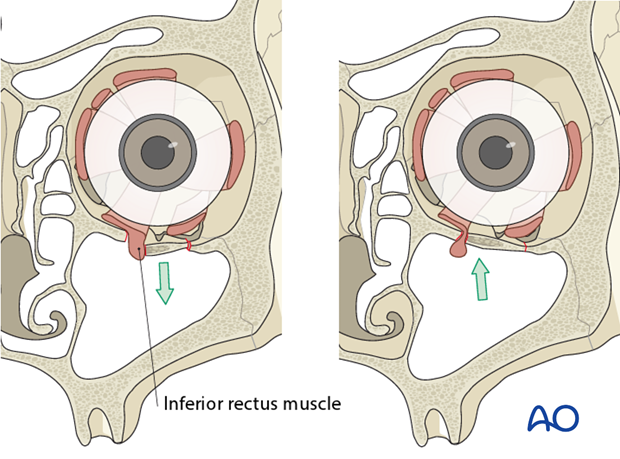
Bone fragments affecting the optic nerve
Special attention has to be paid to the posterior third of the orbit and the bony optic canal. Bony dislocations in these anatomical areas are more likely to be associated with traumatic optic nerve lesions.
Axial CT scan in the plane of the optic nerve shows multiple fractures of the lateral orbital wall and the greater wing of the sphenoid of the right side. Additional stretching of the right optic nerve is present. Fractures where fragments involve the posterior third of the orbit are susceptible to subsequent optic nerve disorders.
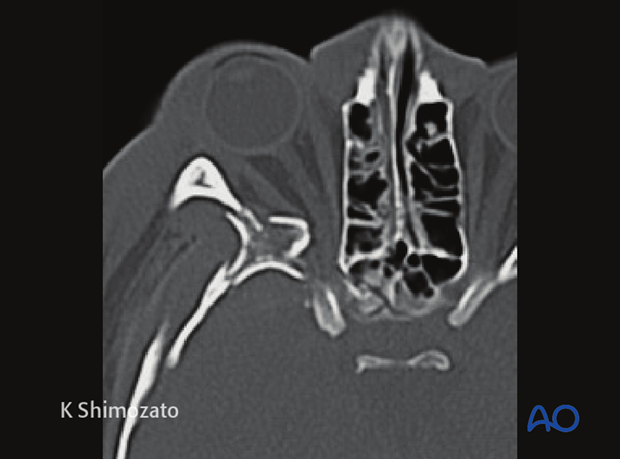
Severe bleeding
In case of severe bleeding the following options should be considered:
- Assessment of current medical treatment for anticoagulation such as Coumadin, Aspirin, or other anti-platelet medication.
- Compression: either by nasal packing, balloon tamponade, or direct compression.
- Electrocautery: if a clear bleeding source can be evaluated.
- Control and adjustment of blood pressure.
- Interventional embolization when other methods fail.
- In some cases fracture reduction may be required to reduce bleeding.
Note: following the emergency treatment, thorough diagnostic examination may be performed to find the source of bleeding:
- Intranasal inspection
- Angiography with possible superselective interventional embolization.












